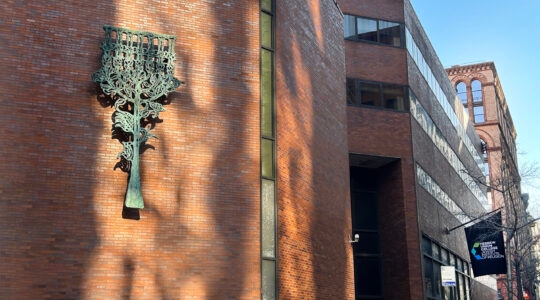On Kristallnacht, the Night of Broken Glass, when a massive coordinated attack on Jews took place in Germany, why did the police not protect the Jewish citizens and prevent such devastation? How do the lessons of the Holocaust apply to law enforcement today? Do police officers bring their own prejudices to their work? How can they use the lessons of the Holocaust to increase tolerance and understanding?
These questions were among many others addressed during a recent training session for 25 Nassau County police recruits. The Holocaust Museum and Tolerance Center of Nassau County, in Glen Cove, is one of only three institutions other than the U.S. Holocaust Memorial Museum to offer the four-hour program, “Law Enforcement & Society: Lessons of the Holocaust.” (The other two are in Houston and St. Louis.)
Created in 1999 by the U.S. Holocaust Memorial Museum and the Anti-Defamation League, the program was developed as a training model for recruits, in-service and command-level police officers, federal judges and new FBI agents. More than 50,000 officers and many entering members of the FBI have gone through the program. For the past three years, every graduating recruit of the Nassau County Police Academy has been required to take the program, which is run as a partnership between the Long Island Holocaust & Tolerance Museum and the ADL of New York. In April 2009, it also became a requirement for Suffolk County police recruits.
Karen O’Callaghan, Nassau County police chief said, “My hope is that the recruits will remember the lessons of the Holocaust, and as they take to the streets, they will feel compassion and understanding for all of the people they meet along the way. I believe that this training helps make the men and women more successful in both their personal and professional lives.”
The program consists of a 15-minute video presentation on the Holocaust as told by local survivors and liberators, a guided tour of the museum, a discussion on the abuse of police power during the Nazi era and an interactive examination of the role of the American police today, led by an ADL educator.
Howard Maier, chairman of the board of the Holocaust Memorial & Tolerance Center, explained his personal commitment to the program.
“My uncle and cousin were among the 26,000 Jews arrested on the night of Kristallnacht,” he said. “This was the most egregious example of law enforcement gone awry. Hatred, intolerance and prejudice found their way into law enforcement, and law enforcement was a partner to the crime.”
Maier, who in 2006 traveled with a team from the Nassau County Police Department to Washington, D.C. to learn about the training program, enthusiastically brought it back to Long Island.
The mission of the Holocaust Memorial & Tolerance Center is to teach the history of the Holocaust and the dangers of anti-Semitism, racism, bullying and all other manifestations of intolerance, he explained.
“We owe it to the public to train our police officers not only to fight crime, but to fight prejudice, intolerance and hatred,” Maier said. “Our hope is that police cadets can understand how dangerous it is to hold onto long-ago taught prejudices that could have a negative impact on their work.”
Police Officer Shevach Berkovitz of the Nassau County fourth precinct, who went through the training in 2007, said, “I thought I had a good foundation of the Holocaust, but there were many things I didn’t know. After the program there were many questions, and as the only Jew in my class, I fielded a lot of questions, mostly about Jewish traditions and customs. I think we all examined our own prejudices, and my fellow cadets gained a better understanding of Jews, not only during the time of the Holocaust, but today as well.”n
|
Signup for our weekly email newsletter here. Check out the Jewish Week’s Facebook page and become a fan! And follow the Jewish Week on Twitter: start here. |
The New York Jewish Week brings you the stories behind the headlines, keeping you connected to Jewish life in New York. Help sustain the reporting you trust by donating today.




